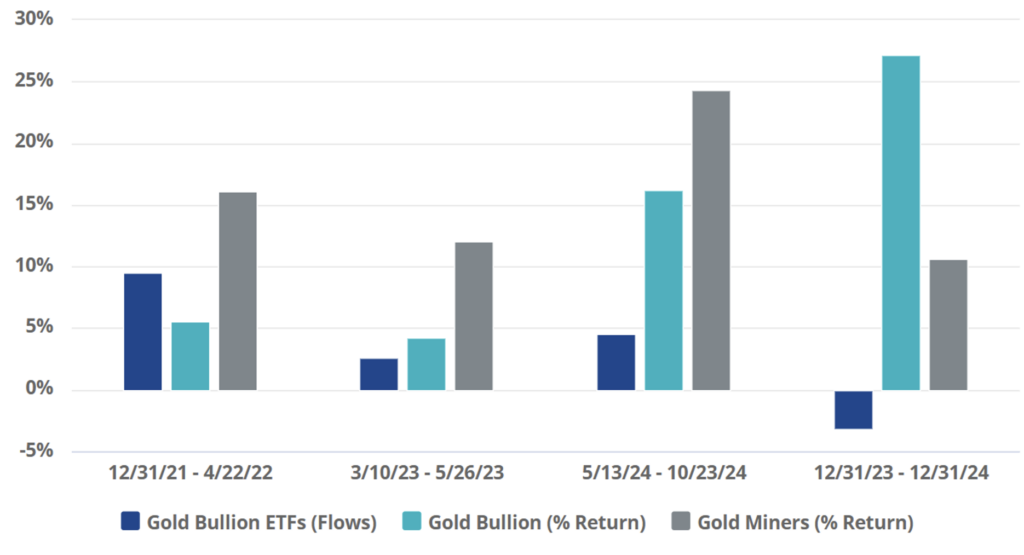Gold had a strong year in 2024 with a 28% upward surge, but that’s not the full story. VanEck highlighted in a recent report, investors showed a clear preference for physical bullion over gold-related stocks. Far from a fluke, this shift reflects fundamental changes in the gold market and investor behavior.
The trend signals a broader move from dollar-linked assets toward instruments with intrinsic value and more stable price action. Understanding why gold ETFs and mining stocks struggled to keep up with physical demand is key to recognizing where the gold market is headed and how investors can position themselves accordingly.
Gold’s 2024 Rally in Focus
The yellow metal marked its largest increase in 14 years with a remarkable 27.6% leap in 2024. This puts it in league with past annual highs such as 2007 and 2010 when gold climbed 30.94% and 29.57%, respectively. What makes last year’s rally truly noteworthy isn’t only the respectable returns; it’s the adverse conditions under which gold achieved them. Unlike previous booms, gold defied economic headwinds to reach record highs in 2024.
Traditionally, gold rises when the stock market falls and the US dollar weakens. However, both markets showed strength last year. This divergence suggests something deeper is at play–an economic transition that strengthens gold’s underlying appeal. VanEck researchers note, “We believe this gold price action reflects a significant shift in the dynamics of the gold markets.”
Physical Bullion & Gold Stocks Diverge
Historically, the price of physical bullion and gold stocks, such as mining shares and gold ETFs, mirror each other. Over the past few years, however, physical and paper gold assets have seen diverging evaluations as purchasing habits and market conditions fluctuate.
Between 2022 and 2024, gold ETFs dropped by 22%, while the spot price of physical gold rose by 36%. The differences don’t stop there, either. The increased demand in the physical sector has led to outsized returns compared to paper alternatives. As mentioned, tangible gold climbed more than 27% throughout 2024. On the flip side, gold-focused ETFs fell by 3.2%, while mining shares grew by 10.6%.

Central Banks Lead the Shift
According to VanEck analysts, this growing differential is largely attributable to “significant gold buying by the official sector in recent years.” In other words, the sheer volume of central bank demand since 2022 has ushered in a “new gold market reality” where gold equities fall short of physical prices.
Following years of dampened purchases, governments started topping up their reserves at a record-setting pace amid pandemic-era chaos. National-level investors across the globe are motivated by a combination of economic, political, and geopolitical factors weighing heavily on fiat currency strength.
Retail Investors Take a Back Seat
In the past, Western investors drove gold prices by investing in mining stocks and gold ETFs. Yet, these gold proxies always failed to offer direct exposure to physical bullion, leaving investors with a semblance of diversification.
Despite gold’s stellar performance in 2024, retail players largely remained in the stock market which also hit several all-time highs. As Precious Metals Advisor for Scottsdale Bullion & Coin, Tim Murphy explains, “The most well-informed, well-funded entities are buying gold and silver. The public is on the sidelines right now.”
Gold Setting Up for 2025 Surge
Gold notched dozens of records in 2024, but the yellow metal’s strength isn’t abating. According to experts, gold has plenty of room to run next year, with the average price forecast targeting over $3,000. Barely a week into 2025, gold has already eclipsed a previous record, landing near $2,800.
The bigger central banks…and nations…are buying a ton of gold. Take a page out of their book.–


